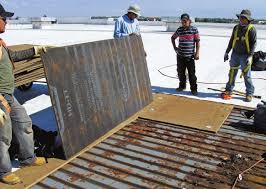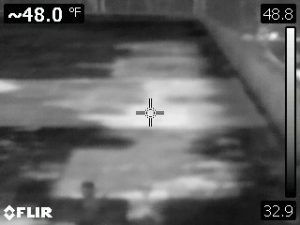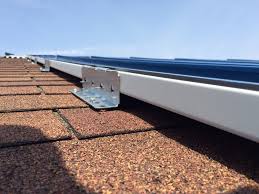
Jennifer Stephan, RRC, CDT
Senior Consultant
As a roof nears the end of service life, building owners are faced with many options including roof replacement, roof recover, and temporary repair, depending on the condition of the existing system. Many factors should be considered to determine the best path to restore the roof to full function including budget, risk or impact, schedule, and long-term capital planning.
In many cases, full removal of the existing system(s) down to the structural deck and replacement with a new roof system (‘roof replacement’) is the most responsible, and sometimes, the only option. However, roof recover, or overlay, may be an alternative in certain circumstances. Roof recover systems are generally installed over the existing roof system, which is left in place in whole or in part.
Roof recover gained popularity in the 1970’s as an alternative to full roof replacement in a time when economic pressures within the industry and energy conservation was just beginning to come to the forefront. Single-ply membranes have long been marketed as an ideal solution for recovering an existing system. The growth in market share for recover systems was driven largely by increased manufacturer warranty offerings, cost savings, and increased energy efficiency. Recover systems include nearly all types of roofing systems, including modified bitumen membranes, single-ply membranes, asphalt composite shingles, spray foam, and standing seam metal.
There are several key benefits to roof recover versus replacement:
- Defer removal and landfilling costs for the life of the new recover system (15-20 years).
- Provide a savings in both labor and materials compared to the cost of roof replacement, possibly as much as 30-40 percent, depending on the system.
- Retain the existing insulation in a roof recover system, reducing the amount of new insulation brought to site for installation.
- Lower impact to building occupants, as well as reduce dust, debris and waste.
- In some jurisdictions, exemptions may be available from the energy code requirements to upgrade the R-value of the roof insulation, further reducing the amount of materials purchased.
For either roof replacement or roof recover, a site survey and investigation, including a moisture detection scan, should be completed to assess the existing conditions. Here are several roof recover option “qualifiers”:
1. Code Compliance
Before proceeding with a recover system, the code requirements must also be reviewed as part of the investigation. As only two roof applications are allowed under the International Building Code before full tear off is required, an investigation should confirm the build-up of the existing assembly. If the roof has already been recovered in the past, another recover is not an option (Reference 2015 International Building Code Section 1511.3.1).
Deck corrosion under Phenolic Foam (Courtesy of RCI/IIBEC-online.org)
2. Structural Capacity/Deck Suitability
The structural capacity of the existing structure should be determined in order to evaluate the additional dead and live load imposed by a recover system. Some buildings may not have adequate structural capacity for additional materials.
3. Roof Attachment/Wind Uplift
All roofs must be designed to meet wind uplift requirements for the site. In steel deck assemblies, this usually can be done by attaching the new roof through the existing, into the deck. Other deck types such as concrete panel, gypsum and others are not conducive to mechanical attachment.
Compactable fills, such as “cinderfill” or All-Weathercrete, (used in the past to create slope), are not suitable for most recover options, depending on the underlying roof deck type.
Trapped moisture found during thermal scan.
4. Moisture Content
Critical to the evaluation is an assessment of any damage and/or moisture trapped within the existing system. A recover system should never be installed over a ‘failed’ roof system. Repairs must first be completed to remove trapped moisture and to restore the structural integrity of the existing system before any recover materials are applied. Depending on the severity of the damaged or wet materials, the cost to repair an existing system in preparation for recover may outweigh potential savings.
5. Phenolic Foam
Phenolic foam was manufactured in the 80’s and 90’s; and was found to be corrosive to steel when it became wet. Corrosion of steel decks and steel framing resulted. As a result, the best practice in dealing with existing roofs that have phenolic foam is complete removal. Recovering over phenolic foam is not recommended.
6. Slope/Drainage Issues
When considering whether roof recover is an option, an investigation should carefully consider the existing slope and pathways for drainage. With a roof recover, the existing drainage systems are generally re-used. Although tapered insulation can be added during a roof recover to promote drainage, if the roof requires major drainage changes, associated cost(s) may outweigh any savings from the recover option.
7. Water Vapor Mitigation
Adding materials to an existing system may also impact the function of an existing vapor retarder. Below deck insulation and the intended temperature and environment within the facility should be considered.
Metal over Steep Slope Asphalt Shingles (Courtesy of McElroy Metals)
If it has been determined that recover is a viable and responsible option, the following design considerations should be reviewed:
- The recover system should be a tested and rated assembly covered by a manufacturer’s warranty.
- The building and energy codes should be reviewed to determine if additional insulation is required to meet code or to achieve the desired interior environment for the building owner. While exemptions may be allowed, it may not always be advisable to compromise energy efficiency.
- Recovering will add height to the existing system, which may impact the flashing heights at curbs and penetrations. The new system may also be incompatible with the existing system, and separation or full replacement of the flashings may be necessary.
- Attachment of the recover system should be designed to connect to the primary building structure or deck in order to achieve long-term performance and wind uplift resistance. Relying upon the bond of an existing system for attachment of the new system is never advised.
As noted above, recovering a roof may provide many benefits over full replacement, including limiting the impact to building users, reduced waste sent for disposal, and cost savings given reduced labor and materials. The material options available for recover are numerous and varied. As with any roof replacement project, the quality of the preparation and installation of the recover system will determine how effective the system is and how long it can provide reasonable service.
While full roof replacement will generally provide a reasonable service life of 20 to 25 years, a roof recover can generally be expected to provide a reasonable service life of 15 to 20 years. A long range capital plan and budget for the building should be discussed to determine whether roof recover or replacement is the best path in the long run.



